Disclaimer: While we have consulted professionals for this article, we are not doctors and this should not be taken as medical advice. You should consult with your personal physician if you have any concerns.
We spend hours hunched over at our desks, eyes glued to our screens, feverishly clicking away on our mice and keyboards. Whether you’re a pro gamer or a casual one, the glory of topping the leaderboard is meaningless if you have to compromise your health to achieve it.
Doing proper exercises can reduce pain and fatigue from gaming for prolonged periods of time. It’s recommended for everyone to take at least a 10-minute break from gaming every hour. In reality, however, being absorbed by the action and the responsibility of having to carry your team often distracts us from paying attention to adequate rest.
Because physical well-being is so essential, we asked two strength and flexibility coaches, Phil Toppin and Slava Kozlov, to curate an exercise routine that every gamer should do to remain pain free. These exercises are simple, safe, and feel great when done right. Once you’re familiar with the routine, it can be completed in under five minutes. If you can, do the whole circuit once an hour.
The Foundation
We’re all too familiar with the hunchback when playing games. In addition to looking like a slob, hunching puts a ton of pressure on our backs, shoulders, and necks. This is called being in spine flexion. To maximize the effectiveness of the exercises, we need to assume a neutral posture first. A neutral posture is where the spine is not flexed or overextended, but at its maximum natural length.
Our preliminary exercise, seated spine flexion and extension, is designed to help you accurately find your neutral spine.
- Assume an exaggerated spine flexion stance.
- Slowly move into a hyper-extended stance.
- As you relax, feel out a point where the head, ribs cage and hip stack on top of each other. That’s where your neutral spine is.

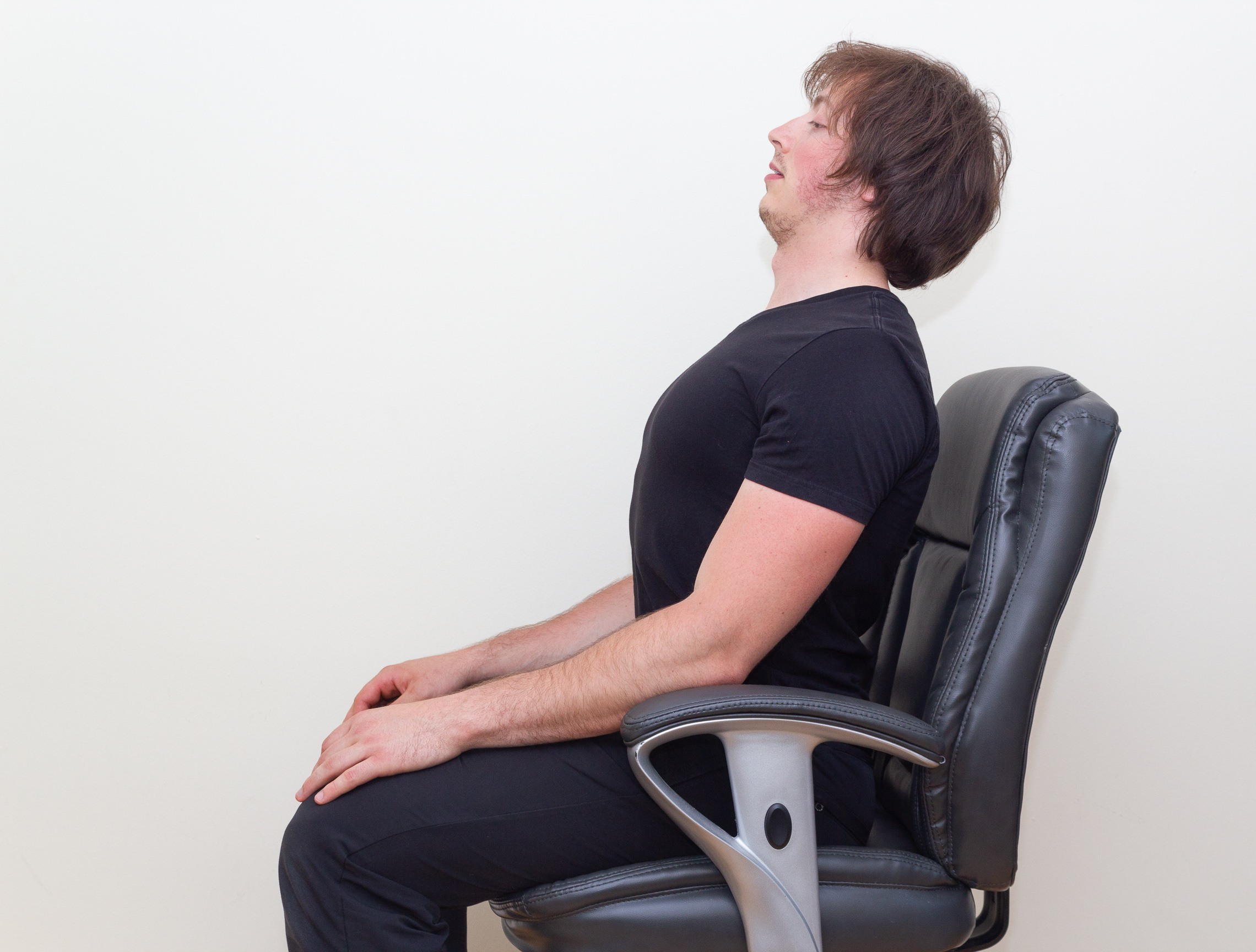
Alternating between an exaggerated flexion and hyper-extended position helps you feel out where the neutral spine is. If you can, perform this in both seated and standing positions.
The biggest gaming news, reviews and hardware deals
Keep up to date with the most important stories and the best deals, as picked by the PC Gamer team.
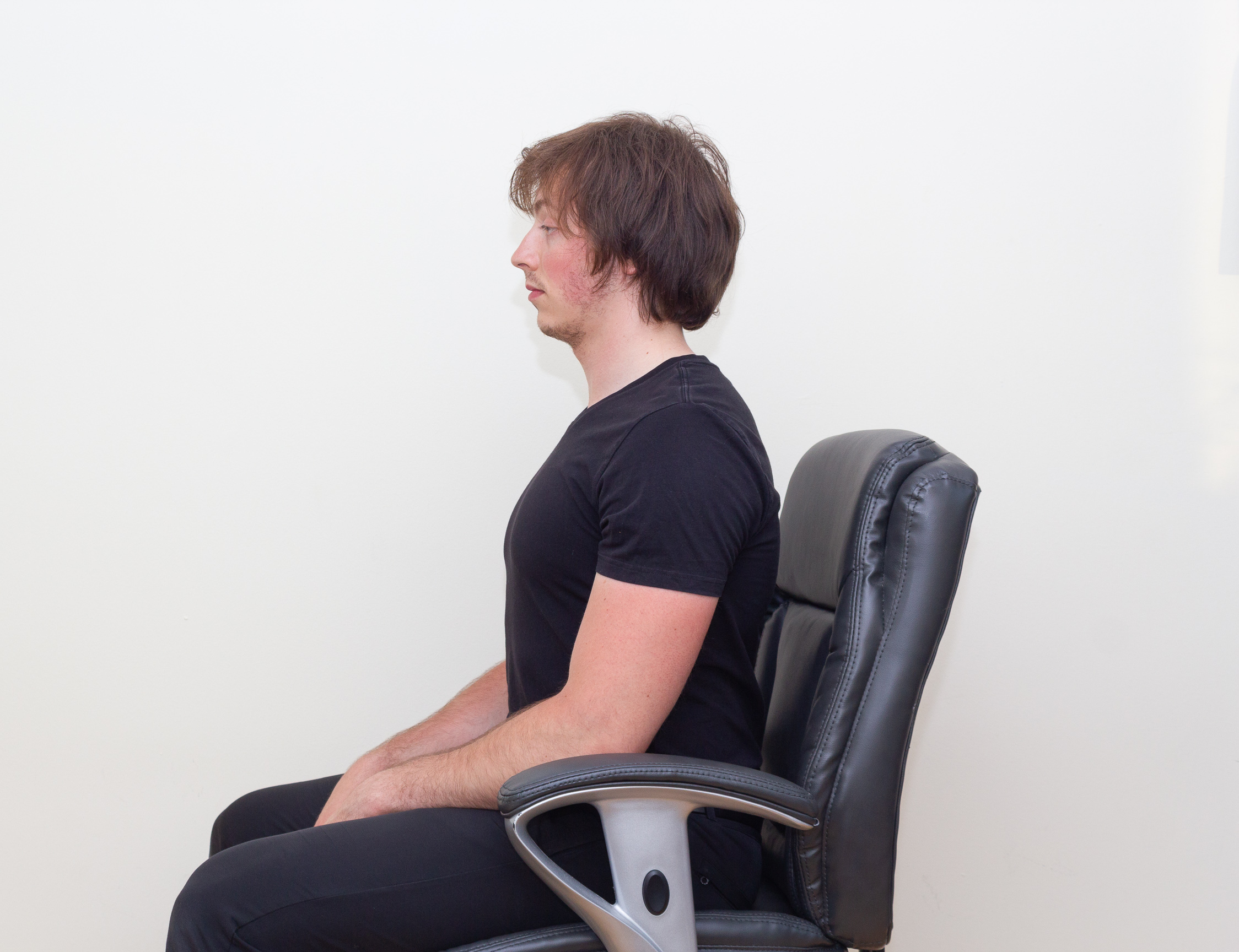
This foundational exercise should be performed by anyone who is unfamiliar with the concept of a neutral spine. You can skip this exercise once you are able to do it instinctively.
Spine
Your spine bears the weight of your entire body. These exercises are designed to alleviate strain and reduce back pain.
Exercise 1: Twisting from neutral seated – 5 reps per side
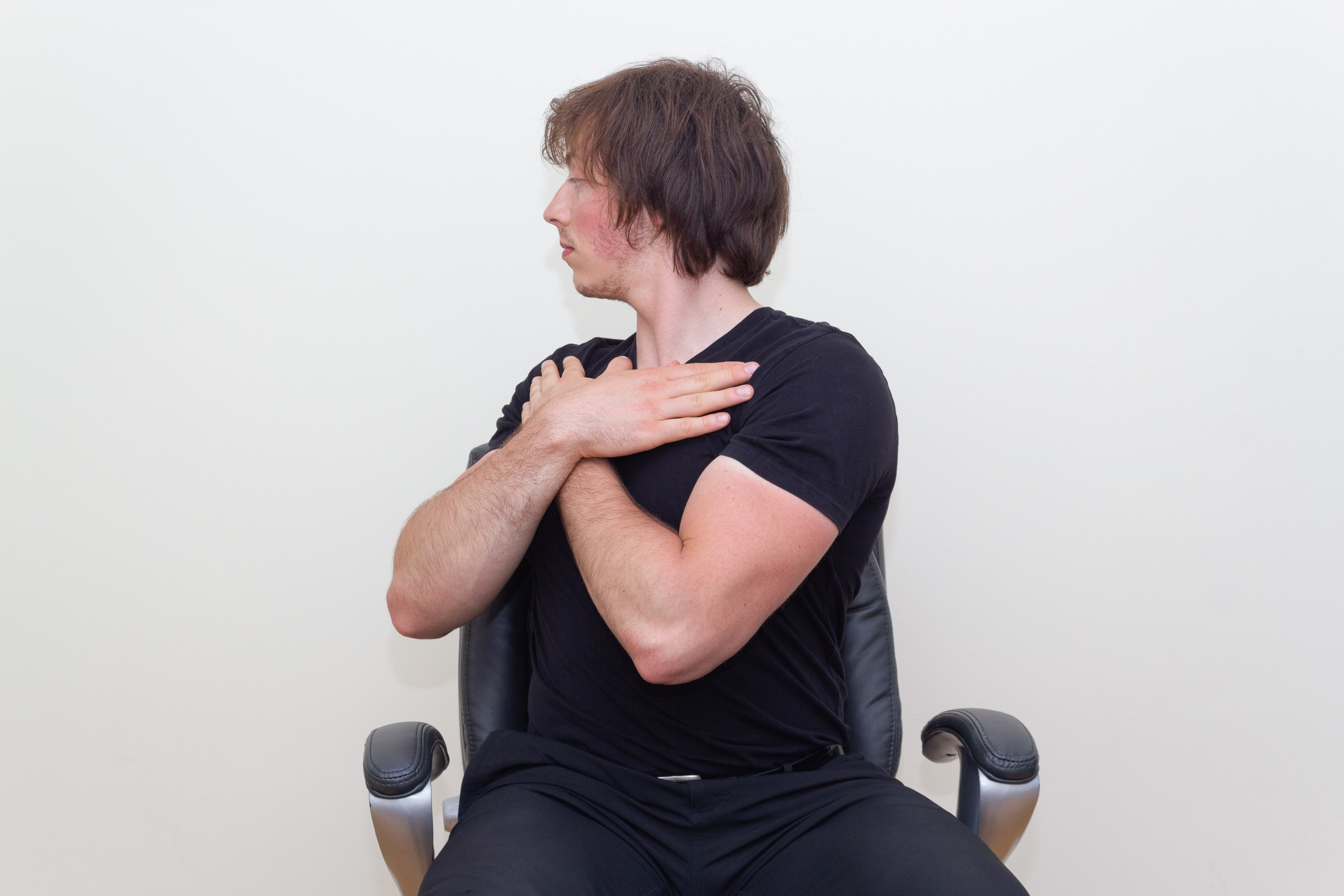
- Find your neutral spine.
- Keep your hips stationary.
- Place your hands on your chest.
- Twist everything from the hips up.
- Twist your ribcage and head as far as you can without discomfort.
You should feel a stretch along your back from your shoulder to the opposite hip.
Exercise 2: Twisting from split stance – 5 reps per side
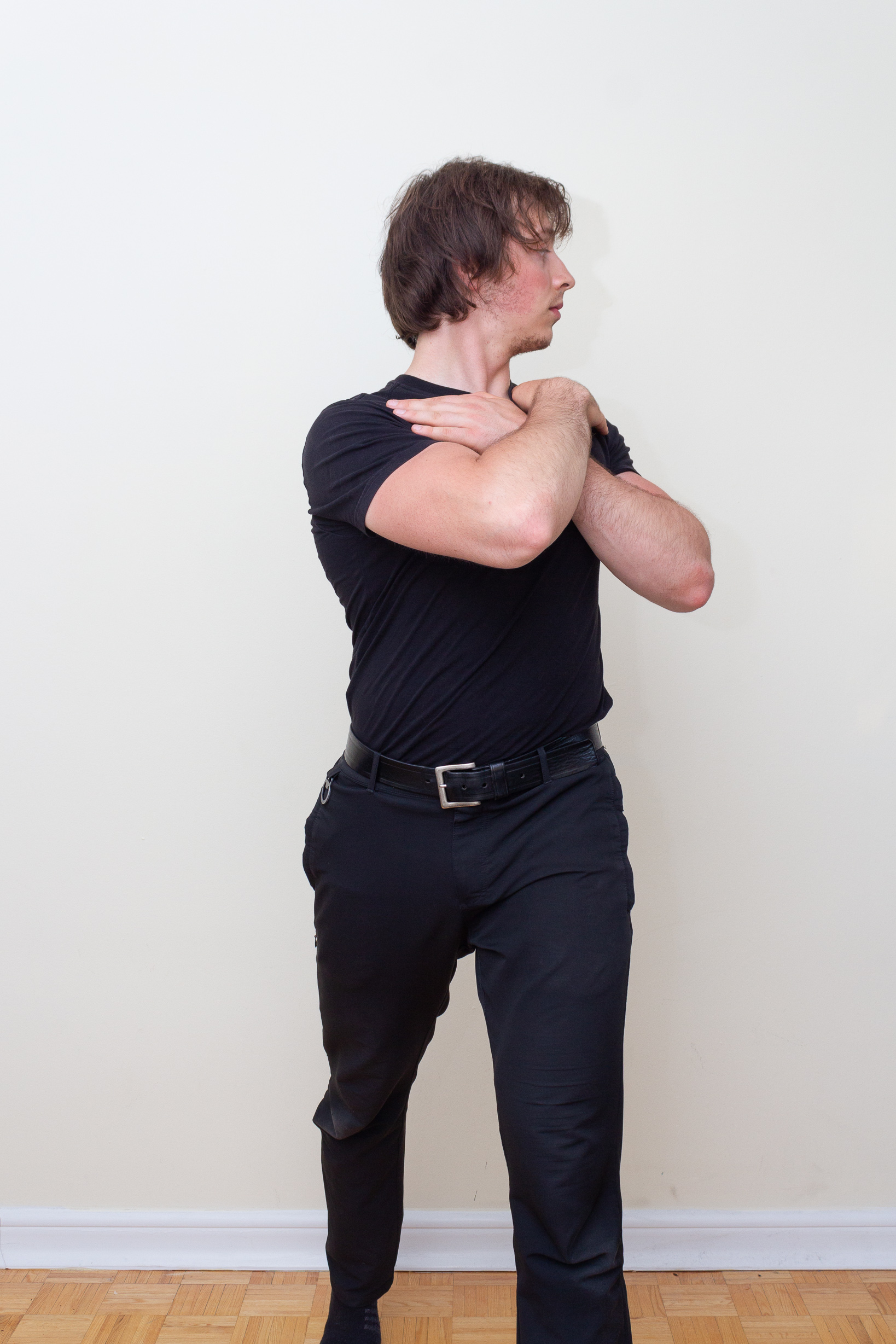
- Extend your leg back far enough to feel a stretch in your glutes.
- Tighten your glutes (your butt).
- Assume a neutral spine, pin your shoulders, and slowly twist away from the extended leg. (Keep your shoulders parallel)
- Return to your initial stance.
- Repeat on opposite side.
The split stance is a great way to stretch your legs. In addition to feeling a stretch in your back, you should also feel a stretch in your abdomen and the front of your leg. It also increases the effectiveness of the stretch along your torso.
Neck
Your neck experiences a crazy amount of strain from carrying your noggin all day. Tilting your head forward by 15 degrees can add 27 pounds of force to your cervical spine. Proper stretching in this area is absolutely essential.
To stretch a muscle, we need to pull on it from both its ends. To ensure that the stretch is effective, there needs to be enough space between the two endpoints. For our neck exercises, we need to maintain a neutral spine and pin your shoulders down so that muscles in your neck can experience a full stretch.
Exercise 3: Neck lateral flexion – 5 reps of 6 seconds per side

- Find your neutral spine.
- Pin your shoulders. To do this, shrug your shoulders to your ears and pull them down away from your ears as far as you can. Keep them still in the maximum extended position.
- Reach over your head and place your hand on the side of your head above the ear. It could feel a little difficult to raise your hand over your head, but try your best to not move your shoulders. Also, do not tilt your head forward or backward!
- Gently use your hand to tilt your head to the side. Again, keep your shoulders pinned!
- Repeat on the other side.
You should feel a pull on the side of the neck that you’re tilting away from.
Exercise 4: Cervical spine flexion - 5 reps of 6 seconds

- Place either one or both hands on the back of your head. The exercise is performed with one hand in the reference to clearly show how the chin retracts, but using both hands is preferred.
- Pin your shoulders.
- Retract your chin. Basically, give yourself a double chin.
- Try to pull your chin into your neck as though you’re trying to push your spine out the back of your neck.
You should feel a significant stretch in the back of your neck.
Wrist and arms
Typing on keyboards and holding our mice confines our hands to a clawed position. Maintaining this position for years could shorten our tendons and reduce our dexterity. The following stretches are designed to lengthen them in the opposite direction, reducing the risk of carpal tunnel syndrome and tendon calcification while increasing mobility. Again, the concept of pinning your shoulders is critical.
Exercise 5: Wrist extension – 5 reps of 6 seconds
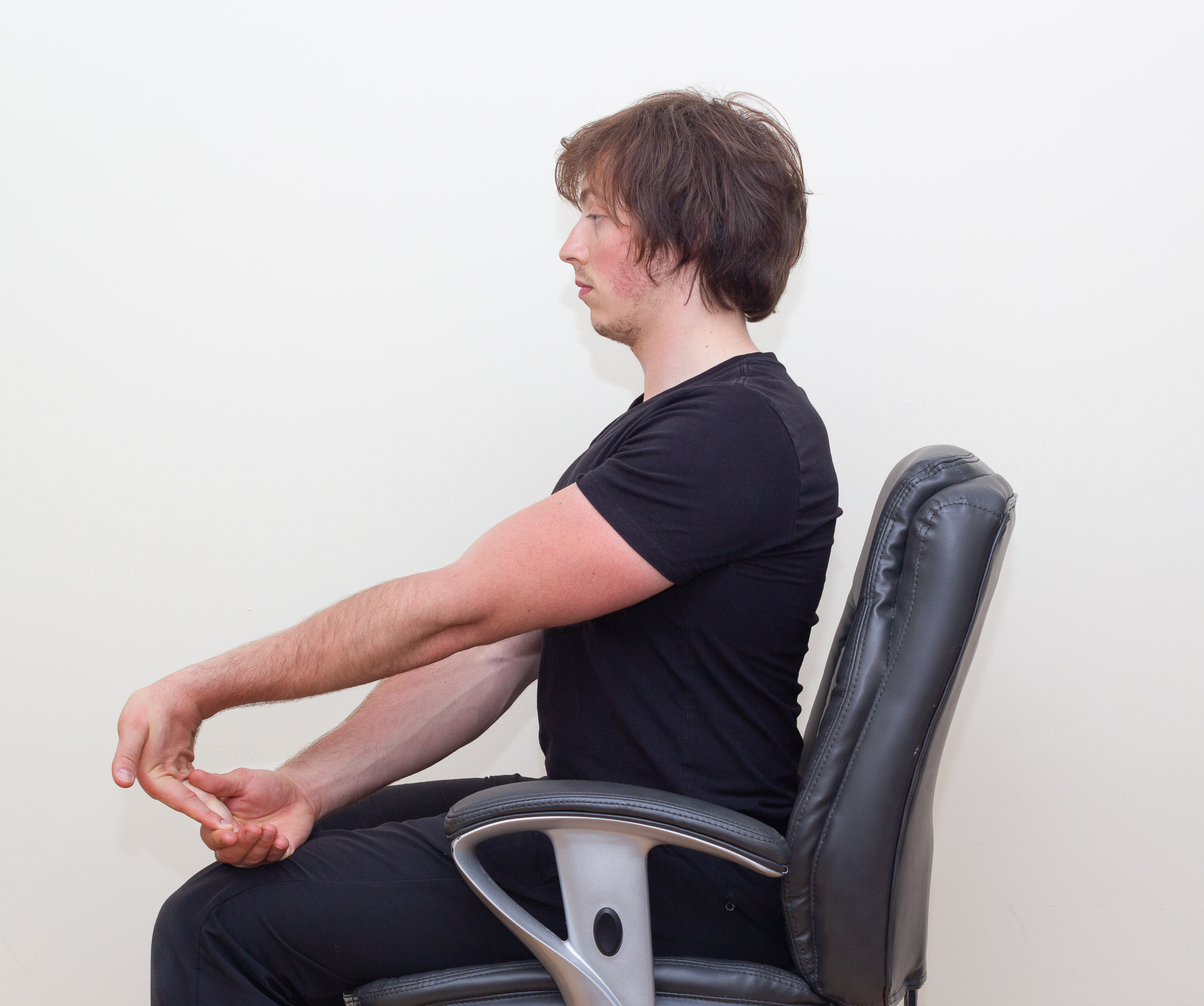
- From seated position, extend an arm out straight with your palm facing skywards.
- Reach the fingers towards the ground with your extended hand.
- Keep your elbow straight and shoulder pinned.
- Using your opposite hand, gently pull the tip of the fingers of your extended hand.
You should feel a stretch in your forearms.
Exercise 6: Chest to forearm stretch – 5 reps of 6 seconds
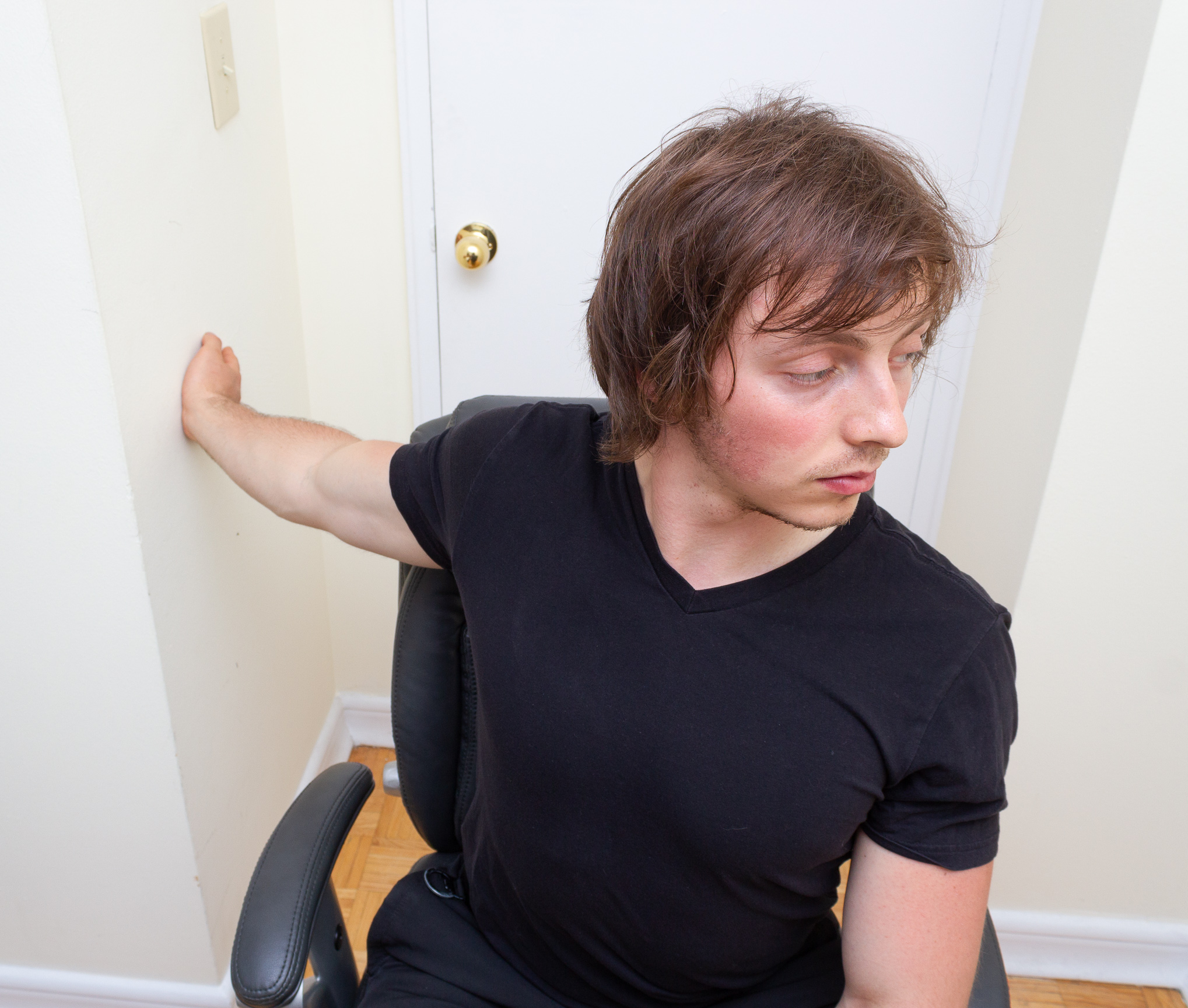
- Sit in parallel to your computer desk.
- Find neutral spine and pin your shoulders.
- Grip onto the edge or corner of the desk with palm facing outwards (keep your shoulders parallel), the arm should be behind your body.
- Slightly lean your body forward, your arm should feel like it’s being tugged.
- Slowly turn your chest and head away from the hand and arm to increase stretch.
- Repeat on other side.
It’s important to feel the tug in your arm before you turn your body. It creates space between your joints which helps to increase the stretch in your muscles, increasing the benefits of the stretch.
Optional exercises
We’ve covered the essential routine, but you can do these optional exercises to boost the benefits.
Standing spine flexion and extension – 5 reps
Performed exactly like the seated flexion and extension exercise, except you’re standing this time. Performing this exercise while standing helps you better find your neutral spine for twisting from split stance.
Twisting from neutral standing – 5 reps per side
Keep your feet together, assume a neutral position and slowly twist your torso at the waist. Remember to keep the hips stationary and your shoulders in parallel. Do this if you don’t have enough room perform the split stance.

